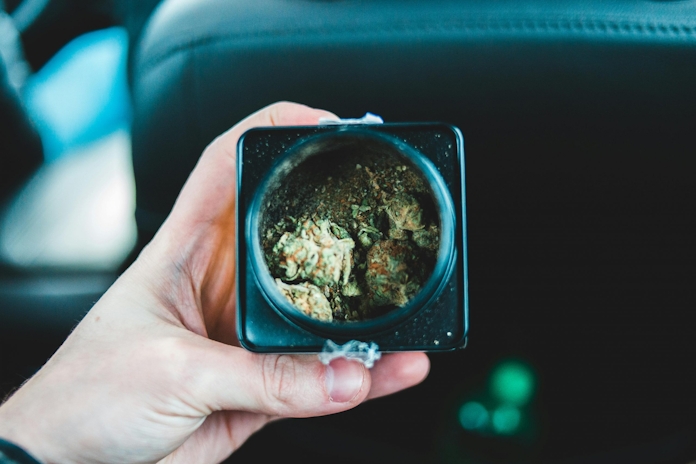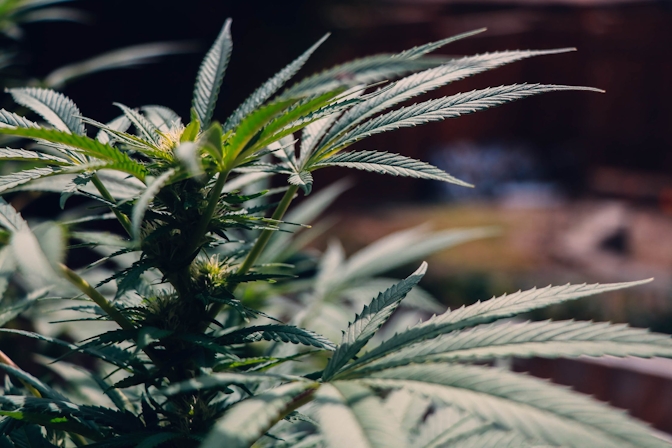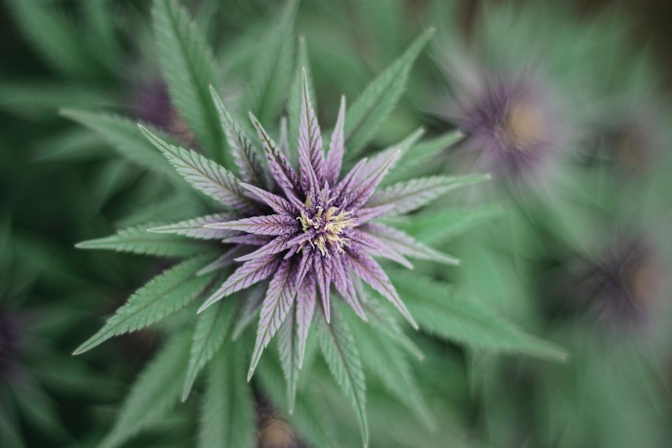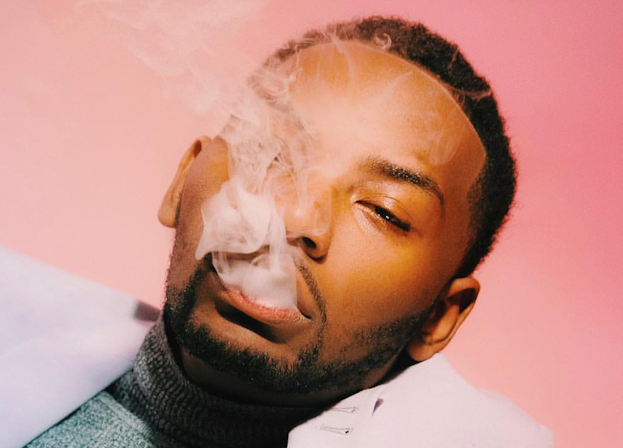
Weed Colors: What Are They And What Do They Mean
There are many colorful weed strains out there. But what does different color weed strains indicate?
Before cannabinoid testing, we could only measure cannabis strains with our senses – how did they smell and taste?
Buds can attract attention for many things, but without a doubt, the colors are what make us turn around and say wow.
The green goddess is not only green, in fact, there are buds with many different colors than what we are used to. From vibrant purple to deep red to lush green, the chromatic variations in marijuana have raised questions about their meaning and their relationship to the quality and effect of the weed.
So where do those unique bud colors come from?
Weed Colors Meaning

Photo by Elsa Olofsson
Have you ever admired the ranging colors of weed in a cannabis dispensary and wondered what they mean? Although usually associated with vibrant shades of green, cannabis comes in a wide range of colors, each suggesting unique attributes and characteristics.
Some cannabis strains change color as they flower. What’s the secret? Genetics.
Anthocyanins are a group of about 400 water-soluble pigment molecules classified as flavonoids. Depending on these strains and their different pH levels, they may appear:
- Red
- Blue
- Purple
- Yellow
- Brown
Think of leaves in autumn. They change from green to red, orange, yellow, or gold as temperatures drops.
Cannabis does not produce colors until later in the flowering phase, with some exceptions. Once the green fades, those colors can come out and shine.
Temperature plays a vital role, as lower temperatures inhibit chlorophyll production. You may remember from sixth-grade science that chlorophyll is the essential plant component for photosynthesis.
Depending on the strain’s lineage, colors begin to appear in cannabis when the temperature drops and the light cycle shortens, mimicking the change of season.
The ideal range for growing cannabis is a pH of 5.5-6.5. But during flowering, you can lean one way or the other to boost or minimize specific anthocyanins, highlighting certain colors.
Different Colors Of Weed

Photo by Juan David Cano
The colors of weed not only seduce the eye but also offer information about the chemical composition of the plant and its growing environment.
Let’s translate the meaning of marijuana colors:
Green
- Pigment/Compound: Chlorophyll
- Common Varieties: Green Goblin, Green Haze, Green Crack
Green is the color most commonly associated with cannabis and reflects its vigorous and adaptable nature. This predominant hue is the result of the presence of chlorophyll, the pigment responsible for photosynthesis.
Cannabis strains that maintain a deep green color often indicate healthy growth and optimal growing conditions. In addition, the green in cannabis can vary in hue, from bright green to a darker, earthy green, depending on factors such as strain genetics and stage of maturation.
In terms of effects, green strains are incredibly versatile, being able to offer anything from energetic and uplifting sensations to deep relaxation and sedation, depending on the unique chemical composition of each strain.
Violet/Purple
- Pigment/Compound: Anthocyanins
- Common strains: Purple Urkle, Granddaddy Purple, Purple Haze
Purple is one of the most wanted colors in cannabis, as it evokes a sense of luxury and sophistication.
Strains exhibiting purple hues are usually Indica-dominant and are distinguished by their unique fruity aroma and flavor. This characteristic color develops in response to cooler temperatures during the flowering phase, which stimulates the production of anthocyanins.
In addition to its aesthetic appeal, purple cannabis is often associated with relaxing and sedative effects.
Red
- Pigment/Compound: Anthocyanins
- Common strains: Red Dragon, Red Poison, Pink Panther
Red hairs are appearing more frequently these days, but surprisingly, red buds and leaves are not as common. In fact, the red color in cannabis is a rarity, as it is only produced by a specific genetic mutation.
It is normal for some buds to have reddish pistils, but strains that exhibit red hues are usually carefully created hybrids that combine Ruderalis, Indica, and Sativa varieties. This distinctive color is not only visually striking but can also indicate a high concentration of certain compounds, potentially resulting in powerful effects.
Medicinal users often seek out red strains because of their analgesic and anti-inflammatory properties.
You can also cheat by changing the leaves and buds of plants to red by manipulating the nutrients. Phosphorus deficiencies can cause this, but it won’t be as pretty as the real thing.
Orange
- Pigment/Compound: Carotenoids
- Common Varieties: Orange Cookies, Orange Haze, Orange Dream
This vibrant color is due to the presence of carotenoids, compounds also found in fruits and vegetables such as carrots and pumpkins.
Orange hues in cannabis can indicate specific growing conditions, such as alkaline pH levels or nutritional deficiencies. Orange will primarily affect hairs and buds.
In terms of effects, strains with orange hues can offer uplifting and stimulating experiences, perfect for combating stress and improving mood. In addition, their citrus aroma and sweet and sour taste give these strains a different touch.
Yellow
- Pigment/Compound: Carotenoids
- Common strains: Lemon Haze, Golden Lemon, Strawberry Banana
Carotenoids give cannabis those citrus shades of yellow, gold, and orange.
To get these colors, you need higher alkaline conditions. If these colors are predominant in the plant, they will come out naturally when the flowering phase is over and the chlorophyll starts to fade.
Yellow strains often have high THC concentrations, which can result in a euphoric and stimulating experience.
Blue
- Pigment/Compound: Anthocyanins
- Common Strains: Blue Haze, Blue Cheese, Blue Dream
Cannabis strains that exhibit blue hues are prized for their exotic appearance and relaxing effects.
This characteristic color is produced by the presence of high concentrations of anthocyanins, which develop in response to cooler temperatures during the flowering phase.
The blue color in cannabis is typically indicative of predominantly Indica strains, which offer a deep and calming physical high. Consumers seeking relief from stress and muscle tension often gravitate toward blue strains for their ability to induce a sense of calm and serenity.
Black
Some rare strains turn so dark that their bud color appears black.
The origin of these genetics can be traced back to Vietnamese landraces, such as Vietnamese Black. Other hybrid-derived strains, such as Black Willy and Black Tuna, share the characteristic dark buds and leaves.
In addition, black strains are noted for their intense, semi-psychedelic cerebral highs. If you want visual effects, this lineage is a sure hit.
The inky appearance comes from an overabundance of all colors on the leaves. With warmer temperatures, dark reds and purples are replaced by lighter reds and golds in some cases.

Photo by Dareus White
A common misconception is that varieties with bold colors are more potent. Contrary to popular belief, the intensity of a variety’s color is not necessarily related to its potency.
In reality, the color of cannabis doesn’t affect its potency; it’s just about visual appeal. However, anthocyanins are potent antioxidants and may offer various health benefits. They are believed to possess analgesic, anti-inflammatory, and neuroprotective properties. Some studies indicate that certain anthocyanins interact selectively with either CB1 or CB2 receptors, depending on their specific type.
So, while the presence of anthocyanins doesn’t change the potency of cannabinoids like THC, it could give the strain an added entourage effect on health.
While visually striking buds may appeal to the senses, potency is based more on cannabinoid and terpene profiles than pigmentation.
Ways To Increase Cannabis Colors
The use of LED lights with specific spectra can boost anthocyanin production in cannabis tissues, so, light stress can be used to improve the weed color.
They serve as a “sunscreen” for plants, so stressing them with more UV light can cause the plant to produce more, enhancing color. Exposing plants to controlled levels of UV light can increase anthocyanin production, resulting in more colorful and vibrant buds.
This technique mimics the sun’s effect on the plant’s natural anthocyanin production, thus stimulating color intensity.
Anthocyanins not only add color but also play an important role in attracting pollinating creatures such as butterflies and bees, while deterring pests that could damage the plant.
By tricking pests into thinking the plant is unhealthy, anthocyanins help protect cannabis during growth.
Herb Recommended Products:
READ MORE










